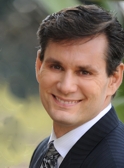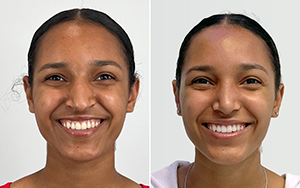Ear Surgery Dr Cruises Philosophy
Joseph T Cruise, MD's Otoplasty Philosophy

Correcting the protruding ear is especially gratifying to me because it is a predictable procedure with powerful results. Having worked with many children who have had difficulties at school because of their ears, I know how important it is to make them look like their peers. The key with ear surgery is not like other plastic surgery procedures. With this surgery, I am not trying to make the ear look prettier or more youthful. My goal is to make the ear so that it isn't noticed. Fortunately, this can be done predictably.
Concerned parents often ask me what age is best to perform the surgery. My response is that it is best to wait until the age of 4. At this age the ear has grown to approximately 85% of its adult size. In addition, it allows the ear to be corrected prior to other children noticing that the ear is protruding.
Otoplasty is not just for children, in fact, a good portion of my otoplasty patients are adults. They are usually well adjusted individuals who just made a decision that they wanted to do something about their ears. Correction of adults is equally as predictable as with children.
As far as the surgery is concerned, I use a very specific suturing technique in order to re-create the natural curve of the ear cartilage. I often find, but not always, that it is necessary to remove some cartilage so that it lays flatter against the scalp. This is all part of the art of ear plastic surgery.
During your consultation, we will determine exactly what is causing the protrusion of the ear. Often it is a combination of excess cartilage and poorly formed cartilage. Once again, it is important to determine this so that the proper surgical technique is applied.
 Otoplasty Procedure. Gray area is excised, ear is folded towards scalp, red line represents final incision which is hidden in the crease behind the ear.
Otoplasty Procedure. Gray area is excised, ear is folded towards scalp, red line represents final incision which is hidden in the crease behind the ear.
The incision is routinely located behind the ear and is virtually unnoticeable. Typically, the procedure takes about an hour and a half. Often, my patients fall asleep during the surgery.. When we are done, you go home with a soft dressing around your head like a head band.
We will also go over the type of anesthesia required. Usually, we are able to perform the correction under local anesthesia in my office. Surprisingly, there is very little discomfort. Patients appreciate the convenience of not having to undergo general anesthesia.
Adult patients usually will have the procedure done under local anesthesia, unless they are having multiple procedures performed. When it comes to minors, if you have a child who can not stay still for very long time, we can discuss doing the procedure under general anesthesia. The anesthesiologists I work with are not only great at their jobs, but they are very good with children.





